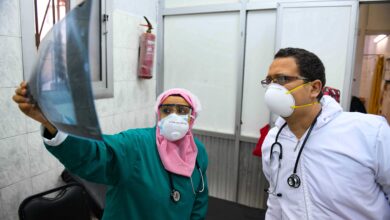
There isn’t enough evidence yet to say for sure whether toddlers and preschoolers need screening for autism even when they don’t have symptoms of the developmental disorder, new US guidelines conclude.
Even though many pediatricians already do routine autism screenings of children between 18 and 30 months old, the US Preventive Services Task Force (USPSTF), a government-backed panel of independent physicians, concluded it’s impossible to know if this helps or hurts.
“Our recommendation is not a recommendation against screening, but a call for more research,” said Dr. David Grossman, vice chair of the USPSTF.
“So far, research has appropriately focused on treatments for children who have symptoms, especially those who are severely affected,” Grossman added by email.
“More research on the impact of screening and treatment in very young children whose parents or doctor have not noticed symptoms is an important next step to helping all children.”
Approximately one in 68 children in the US have autism spectrum disorders (ASD), which can affect behavior as well as social and communication skills.
Early symptoms can vary, but may include repetitive behaviors like hand flapping or body rocking, extreme resistance to changes in routine, and sometimes aggression or self-injury. Behavioral, educational, speech and language therapy may help reduce the severity of autism symptoms in some children.
While there’s little evidence screening or treatment harms children, follow-up tests and interventions may place unnecessary burden on some families in terms of costs and time, according to the USPSTF recommendations published today in the Journal of the American Medical Association.
But the recommendations, which are often used by government and private insurance providers to make coverage decisions, could eliminate funding for pediatricians to screen toddlers and preschoolers, Dr. Jeremy Veenstra-VanderWeele of Columbia University argued in an editorial in JAMA Psychiatry.
The American Academy of Pediatrics recommends screening all children for autism at 18 and 24 months, he wrote.
“This is what pediatricians are supposed to be doing, and should continue to do,” he added by email.
Screening kids even when parents and doctors don’t see symptoms may be of benefit to children who might otherwise fall through the cracks, Geraldine Dawson of Duke University argued in an editorial in JAMA Pediatrics.
That’s because typical symptoms are much more likely to be noticed in white children than in black or Hispanic kids.
“Universal autism screening helps reduce the disparities in access to services for children from different racial and economic backgrounds,” Dawson said by email.
Symptoms in toddlers and preschoolers may be subtler, and harder to spot, than some of the hallmarks like repetitive behavior that occur more often in severe cases and with older kids, Dr. Michael Silverstein of Boston University said by email.
For younger children, typical flags for autism may include a speech delay, a tendency to play differently from peers or fail to make eye contact when interacting with others, added Silverstein, author of another accompanying editorial in JAMA.
“At this age, it is often difficult to tell the difference between ASD and other behavioral disorders, and doing so tends to require pediatric sub-specialist consultation,” Silverstein said. “It does get easier to diagnose ASD as children get older.”
In other words, reserving screening for kids with easily detected symptoms might leave out a lot of children who might benefit from help.
Therapy at this point varies, depending on how much emphasis parents and doctors place on goals such as improved communication or social skills, reduced repetitive behaviors and intellectual development, Dr. Craig Powell of the University of Texas Southwestern Medical Center in Dallas wrote in an editorial in JAMA Neurology.
Children are unlikely to get unnecessary treatment for autism as a result of screening, and it’s possible they might be diagnosed with another developmental disorder as part of this process that warrants close monitoring or intervention, Powell added by email.
The “main danger” with the recommendations is they might be taken as advice not to screen children at all, Powell said.
“This will lead to some children going undiagnosed who might have benefited from starting treatment sooner,” Powell concluded.



